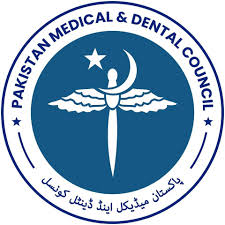Clinical Spectrum and Treatment Outcomes of Osteoarticular Infections in Children at a Tertiary Care Hospital, Karachi
DOI:
https://doi.org/10.37018/UJIY3366Abstract
Background: Osteoarticular infections (OAI) in children, including septic arthritis (SA) and osteomyelitis (OM), cause significant morbidity and are commonly due to Staphylococcus aureus, including MRSA. Delayed diagnosis and antimicrobial resistance worsen outcomes. This study describes the clinical features, microbial profile, and outcomes of pediatric OAI at a tertiary care center in Karachi to guide local management.
Patients and methods: This cross-sectional study was conducted at the Pediatric Infectious Disease Department, NICH Karachi, from June to December 2023. Children under 16 years with confirmed osteoarticular infections (OM or SA) were included. The diagnosis of osteomyelitis was based on clinical signs (pain, swelling, restricted movement), fever >37.5°C, leukocytosis (>13,000/µL), elevated ESR (>20 mm/hr), and supportive radiological or microbiological evidence. Data on clinical features, infection site, lab markers, diagnostics, interventions, culture results, and outcomes were collected using a structured proforma. Common complications included swelling, pain, fever, joint stiffness, infection recurrence, and the need for surgery. Patients with complications required surgery, antibiotics, physical therapy, follow-up, and repeat imaging. Data were analyzed in SPSS v26 using descriptive statistics, the Shapiro-Wilk test, and binary logistic regression, with p≤0.05 considered statistically significant.
Results: 144 patients were enrolled with median age of 8 (IQR=2-12) years. Majority were males (62.5%). One third patents 44 (33.3%) were diagnosed with osteomyelitis Length of hospital days was 4 (IQR=3-7) days. 55.6% patients were completely treated, 3.5% expired, 1.4% developed complications and 39.6% needed further intervention. The final outcome was good among 55.6% and poor among 44.4%. Patient’s feature was found to be significantly associated with final outcome except those who had warmth and limited range on presentation.
Conclusion: Septic arthritis was more common. There was higher burden of poor outcomes. Patients should be continuously under strict surveillance with evaluation of all possible laboratory biomarkers to early prediction and improvement of treatment outcomes.

Downloads
Published
How to Cite
Issue
Section
License
The Journal of Fatima Jinnah Medical University follows the Attribution Creative Commons-Non commercial (CC BY-NC) license which allows the users to copy and redistribute the material in any medium or format, remix, transform and build upon the material. The users must give credit to the source and indicate, provide a link to the license, and indicate if changes were made. However, the CC By-NC license restricts the use of material for commercial purposes. For further details about the license please check the Creative Commons website. The editorial board of JFJMU strives hard for the authenticity and accuracy of the material published in the journal. However, findings and statements are views of the authors and do not necessarily represent views of the Editorial Board.

















